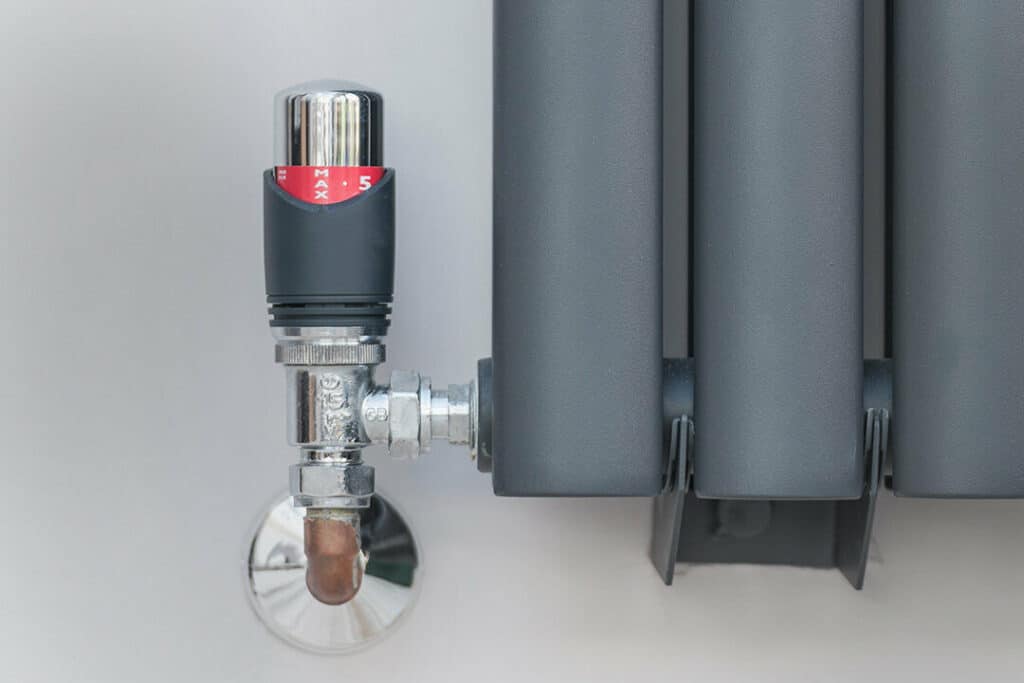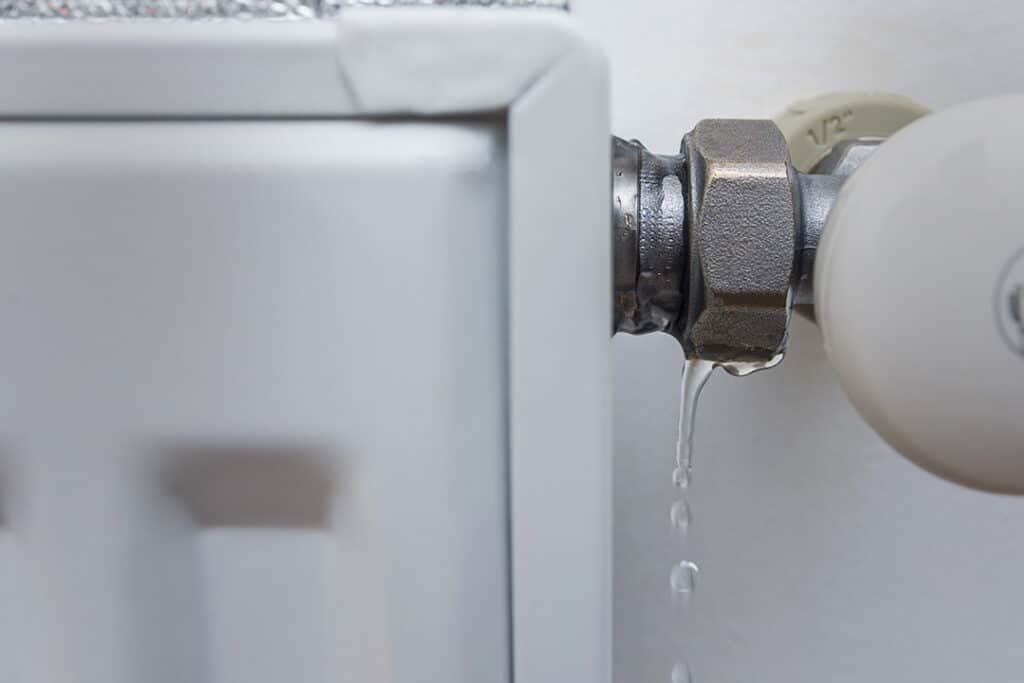Table of Contents
Are you feeling like you’re constantly battling the temperature in your home? It might be time to take a look at your radiator valves. These little controls are like the volume knob for your radiators, determining how much hot water flows in and heats each room. But with all the different types and features available, these valves can get confusing fast. This comprehensive guide is here to clear things up! We’ll break down everything you need to know about these devices, step by step.
In this guide, you’ll discover:
- The different types of valves and how they work.
- How to choose the perfect valves for your home’s needs.
- Top tips for installing your new valves yourself.
- Simple tricks to keep your valves functioning smoothly.
- How to troubleshoot and fix common radiator valve problems.
By the end of this guide, you’ll be a radiator valve whiz! You’ll have the knowledge to keep your home at a comfortable temperature year-round, saving energy and money along the way.
What are radiator valves?
These valves are the control mechanisms on radiators that regulate the flow of hot water. This directly impacts the heat output of the radiator, allowing you to adjust the temperature in individual rooms. Their primary function is to provide control over your home’s heating system on a room-by-room basis.
These valves play a role in energy efficiency by enabling you to reduce heat output in unoccupied rooms. They offer basic temperature control and can be helpful for situations where you might need a quick burst of warmth or a cooler environment in specific areas.
Types of radiator valves
These valves come in two main types: manual and thermostatic. These options offer different approaches to controlling the heat output in each room of your home. Manual valves provide a straightforward way to adjust the flow of hot water with a simple handle. As a result, they allow you to directly manage the radiator’s heat output. Thermostatic valves, on the other hand, take a more automated approach. They allow you to set the desired temperature for the room. Moreover, the valve itself regulates the hot water flow to maintain that temperature, offering a more hands-off solution. So understanding the strengths of each type will help you choose the right valves for your comfort and heating needs.

What are thermostatic radiator valves (TRVs)?
Thermostatic radiator valves (TRVs) help control room temperatures and save energy. Moreover, using them right can cut down on your energy and heating costs, saving you money in the long term. They also regulate the heat output of radiators by adjusting the flow of hot water.
How do TRVs work?
TRV radiator valves have two parts: the head and the body. They control water flow when it gets too hot. The head expands and moves a pin to open or close the valve. When it’s too hot, the valve closes to slow water to the radiator. But if it’s too cold, the valve opens for more water. Furthermore, each valve can be adjusted separately. You can also change the temperature in a room. Just turn the dial on the valve head. Think of TRVs as your room’s temperature maestros, ensuring comfort and energy efficiency.
Can you do without them? Well, technically yes, but it’s less efficient. Without TRVs, you’d need to manually adjust each radiator, leading to uneven heating. So TRVs provide better control and cosiness.
Advantages of thermostatic radiator valves
TRVs offer several benefits for efficient heating. Here are a few of them:
- Energy efficiency: Firstly, TRVs automatically regulate the flow of hot water based on the room’s ambient temperature, optimising energy usage and potentially reducing heating costs and saving energy.
- Individual room control: Next, with TRVs, you can set lower temperatures for rooms that aren’t frequently used, while maintaining comfortable temperatures in main living areas.
- Increased comfort and flexibility: Secondly, these valves allow you to tailor heating to specific rooms, ensuring everyone’s comfort.
- Precise temperature control: Now, if you want to select specific temperature ranges, TRVs can let you do so providing more accurate heating adjustments.
- Cost savings: Efficient energy use lowers utility bills, so it makes TRVs a cost-effective choice.
- Compatibility with smart heating systems: TRVs work seamlessly with smart home setups. They enhance overall energy management. So switching to thermostatic valves is straightforward. As a result, you can significantly improve your heating control.
Disadvantages of thermostatic radiator valves
While thermostatic radiator valves (TRVs) offer several benefits, there are also some potential disadvantages to consider:
- Initial cost: Installing TRVs can be expensive initially, especially if you’re retrofitting an existing heating system.
- Complexity: Some users find TRVs confusing to operate due to the different settings and temperature ranges.
- Maintenance: TRVs require periodic maintenance to ensure they function correctly. Dust or debris buildup can affect their accuracy, so regular cleaning is necessary.
- Incompatibility with some systems: Not all heating systems are compatible with TRVs. So ensure your system supports them before installation.
- Limited zoning: While TRVs allow individual room control, they don’t provide true zoning. So if you have got a more precise zoning, you may also need a more advanced system to install.
- Risk of sticking: Occasionally, TRVs can stick in a partially open or closed position, affecting temperature regulation. As a result, regular checks are essential to prevent this issue.
- Noise: Some TRVs may produce clicking or tapping noises during operation, which can be bothersome in quiet environments.
What are manual radiator valves?
Manual radiator valves are basic and easy-to-use angled taps that you’ll find at the side of your radiator. Just like a tap, you turn them anti-clockwise to turn the radiator on, allowing hot water to flow through. Next, to turn it down or off, simply rotate them clockwise. Without a doubt, these valves provide direct control over your room’s heating.
How to use manual radiator valves?
When using manual radiator valves, consider the following safety precautions:
- Regular inspection: Firstly, check the valves periodically for leaks, corrosion, or any signs of damage. So if you find any issues, address them promptly.
- Avoid over-tightening: Secondly, be gentle when adjusting the valves. Over-tightening can cause damage or lead to leaks.
- Bleeding air: Thirdly, if your radiator isn’t heating properly, bleed any trapped air from the system using the bleed valve (usually located at the top of the radiator).
- Keep clear: Next, ensure that furniture or curtains don’t obstruct the valves, affecting their functionality.
- Professional installation: Finally, if you are installing new valves, consult a professional to ensure proper fitting and safety.
What are the advantages of manual radiator valves?
- Common and easy to find: Manual valves are the most common type of radiator valve, making them easy to locate on radiators. You’ll find them in various styles and colours. So they allow you to choose one that suits your preferences.
- Cost-effective: Manual valves are generally cheaper to install compared to more advanced options like thermostatic TRVs. So if you’re looking for an affordable solution, manual valves are a great choice.
- Direct control: With manual valves, you have direct control over the heating in your home. You can also adjust the volume of hot water flowing into the radiator manually. As a result, this allows you to fine-tune the comfort level room by room.
What are the disadvantages of MRVs?
- Manual adjustment: You need to manually adjust the valve when you want to change the temperature, which may require regular monitoring.
- Less energy efficiency: Manual valves may lead to energy waste if you forget to adjust them as the room temperature changes.
But, if you prefer more precise control over room temperature, consider using thermostatic radiator valves (TRVs) instead!
Radiator Valve Comparison: Manual vs. Smart Thermostatic
Feature | Manual Radiator Valve | Smart Thermostatic Radiator Valve (TRV) |
Control Type | Manual handle adjustment | Programmable dial or app control |
Temperature Control | Basic on/off or manual adjustment | Precise temperature setting for individual rooms |
Automation | None | Automatic adjustment based on set temperature |
Energy Efficiency | Limited, requires manual adjustments | Can optimize heating for reduced energy consumption |
Convenience | Simple to use, no additional setup | Requires initial setup and app connection |
Cost | More affordable (typically £7-£25) | More expensive (typically £25-£75+) |
Warranty | Varies by brand (typically 1-2 years) | Varies by brand (typically 2-5 years) |
Popular Brands | Myson, Drayton, Honeywell | Tado, Nest, Hive, Netatmo (works with various boiler brands) |
While manual valves are cheaper upfront, smart TRVs can potentially save money on energy bills in the long run due to their efficiency. Furthermore, smart TRVs require a compatible hub or bridge for app connectivity, adding to the overall cost. On top of that, warranty lengths can also vary depending on the specific brand and model.
How do I maintain my manual radiator valves?
Well, proper maintenance of manual valves ensures efficient heating and extends their lifespan. Here are some maintenance tips:
- Regular operation: Turn the valves on and off periodically, even during warmer months. This prevents them from getting stuck due to sediment buildup.
- Lubrication: Apply a small amount of lubricant (such as WD-40) to the valve spindle. This helps keep it moving smoothly.
- Bleeding radiators: If you notice cold spots on your radiators, bleed them to release trapped air. This improves overall efficiency.
- Visual inspection: Check for leaks, corrosion, or signs of damage. Replace any faulty valves promptly.
What are common radiator valve problems?
Common radiator valve problems can include:
- Leaky valves: Radiator leaks can occur due to a faulty valve. If the internal mechanism wears out, water may leak. But you can fix this without draining the system by replacing the valve or using temporary solutions.
- One radiator not working: Causes include seized valves, blockages, system imbalance, or air presence.
- Thermostatic Radiator Valve (TRV) Issues: TRVs control room temperature. Problems may arise from faulty installation, diverter valve issues, wrong sizing, dirt or blockages, incorrect temperature settings, or corroded valve bodies.
What are the different types of radiator valve fittings?
There are different types of radiator valve fittings to choose from, but it’s important to pick the right one for your radiator. Here are some popular ones:
- H-block or twin valves: These have two connections to ensure consistent hot water flow around the radiator.
- Corner radiator valves: They save space and work like angled valves but can be a bit tricky to adjust.
- Straight radiator valves: Perfect if your pipes run straight to the valve, often used for towel rails.
- Lockshield radiator valves: These valves have a cap to prevent accidental changes. Every radiator needs one to control water flow.
- Angled radiator valves: These are placed at a 90° angle and are common in homes with hidden pipes.
What size radiator valve do you need?
If you’re wondering about the size of the radiator valve you need, focus on the connection to your pipework. The valve itself sometimes determines the size, but if space is tight, that matters too. Moreover, pipework for radiators can range from 8 mm to 28 mm, with 15 mm being the most common. Valves usually fit this size, but exceptions exist. So you might not find 8 or 10-mm valves, but adapters can help.
Want your radiator to match your room’s theme? No worries! You can choose from various styles like brass or chrome. They’re easy to install and swap out.
How do I fix a leaking radiator valve
Well, fixing a leaking radiator valve is essential to prevent water damage and maintain efficient heating. Here are some steps you can follow:

Turn off the radiator
Firstly, shut off the radiator by turning the valve fully clockwise. This prevents water flow during the repair.
Identify the leak source
Next, check if the leak is from the nut and olive of the valve body, the thread of the insert, or the packing gland nut of the valve head. If the leak persists, proceed to the next steps.
Loosen the nut
On top of that, use an adjustable spanner to loosen the union nut on the leaking side of the valve. So expose the olive or thread where the leak is occurring.
Seal the leak
Next, clean off any old sealant. Moreover, wrap PTFE tape around the spindle of the valve or use Boss White or Loctite to seal the olive or thread. Now, re-screw the insert or nut, ensuring not to overtighten it.
Test for Leaks
Wipe off any excess water. Also, turn the radiator back on and check for leaks. But, if the leak is on the live side of the system, be prepared to drain the system, reinhabit it, and top up the pressure.
Remember, addressing a leaking radiator valve promptly helps maintain a well-functioning heating system!






